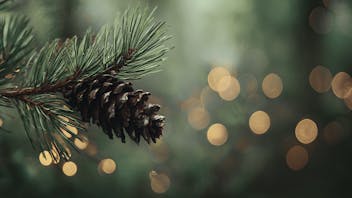Product Overview
The aroma of Opopanax essential oil, with its pleasantly balsamic sesquiterpenes, is another oil akin to Frankincense and Myrrh. It is reputedly the main species of ‘myrrh’ of ancient times, used in incense and perfume.[1] Ours has a sweetly aromatic, spicy, warm, fresh, deep balsamic aroma with woody, root-like, slight animalic, and faint celery / lovage undertones. Quite an array of olfactory input!
Commiphora glabrescens is a tree botanically related to C. myrrha that yields Myrrh essential oil, a product similar in aroma and appearance to Opopanax essential oil.[2] As the oleo-gum resin of C. glabrescens dries, it takes the form of reddish-yellow 'tears' containing 5-10 percent essential oil, about 50 percent gum, and 22 percent odorless resin, the component responsible for this oil's fixative properties.[3] About 5 kilos of resin is required to yield one kilo of Opopanax essential oil.[4]
Both Williams[5] and Arctander[6] specifically point out that the aroma of Opopanax essential oil typically differs from that of Myrrh: Opopanax has a spicy, "somewhat broth-like" or "vegetable soup-like, slightly animal-sweet odor" and "is obviously richer in deep-balsamic sesquiterpene-type notes, while Myrrh essential oil has a light, fresh topnote and comparatively little dry out note."[7] In perfumery and aromatic creations, it can lend a musky and subtly animalic character.
1 Rhind, Jennifer Peace. Aromatherapeutic Blending - Essential Oils in Synergy, 2016, p. 267.
2 Williams, David G. Perfumes of Yesterday, 2004, p. 259.
3 Ibid.
4 Naturals Compendium, International Flavors and Fragrances, 2009, p. 106.
5 Williams, David G. Perfumes of Yesterday, 2004, p. 259.
6 Arctander, Steffen. Perfume and Flavor Materials of Natural Origin, 1960, pp. 470-2.
7 Ibid.



